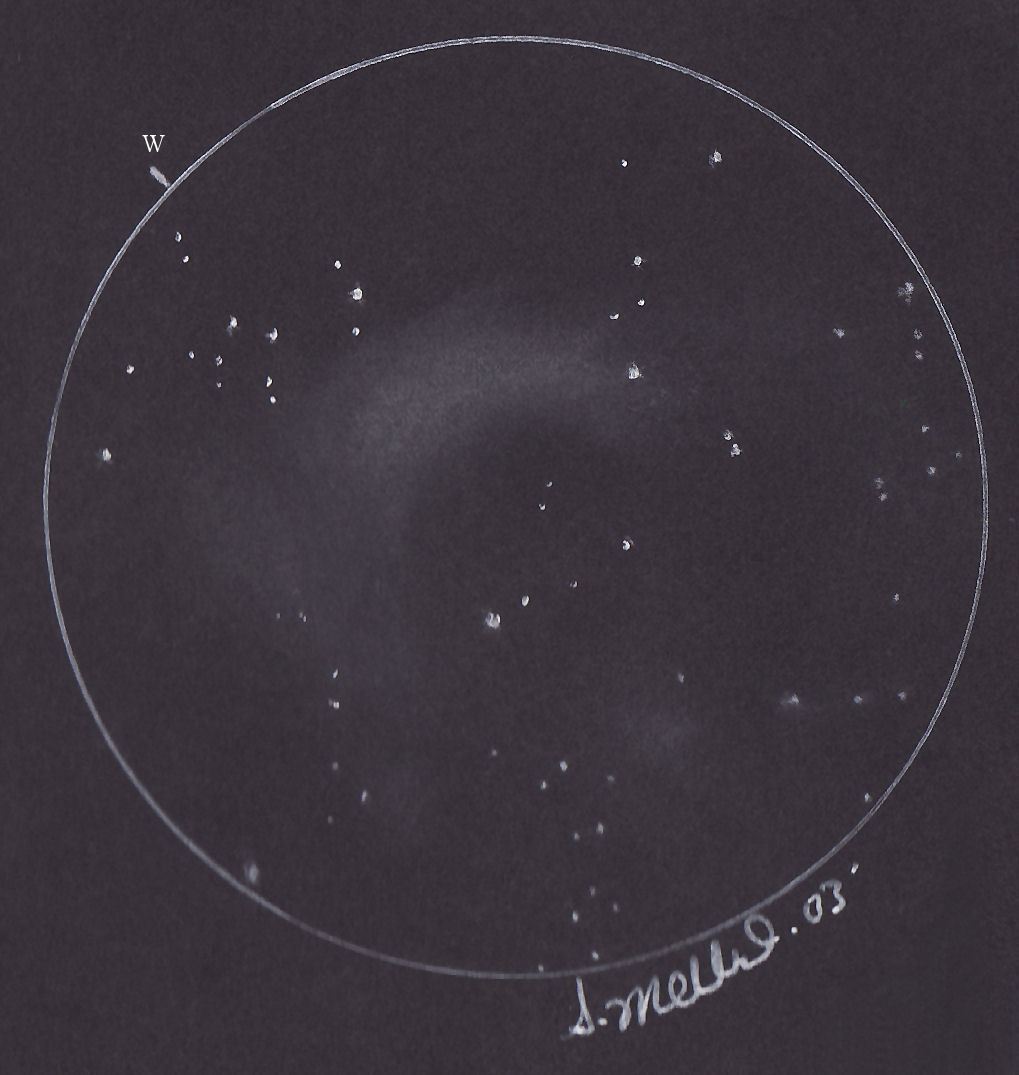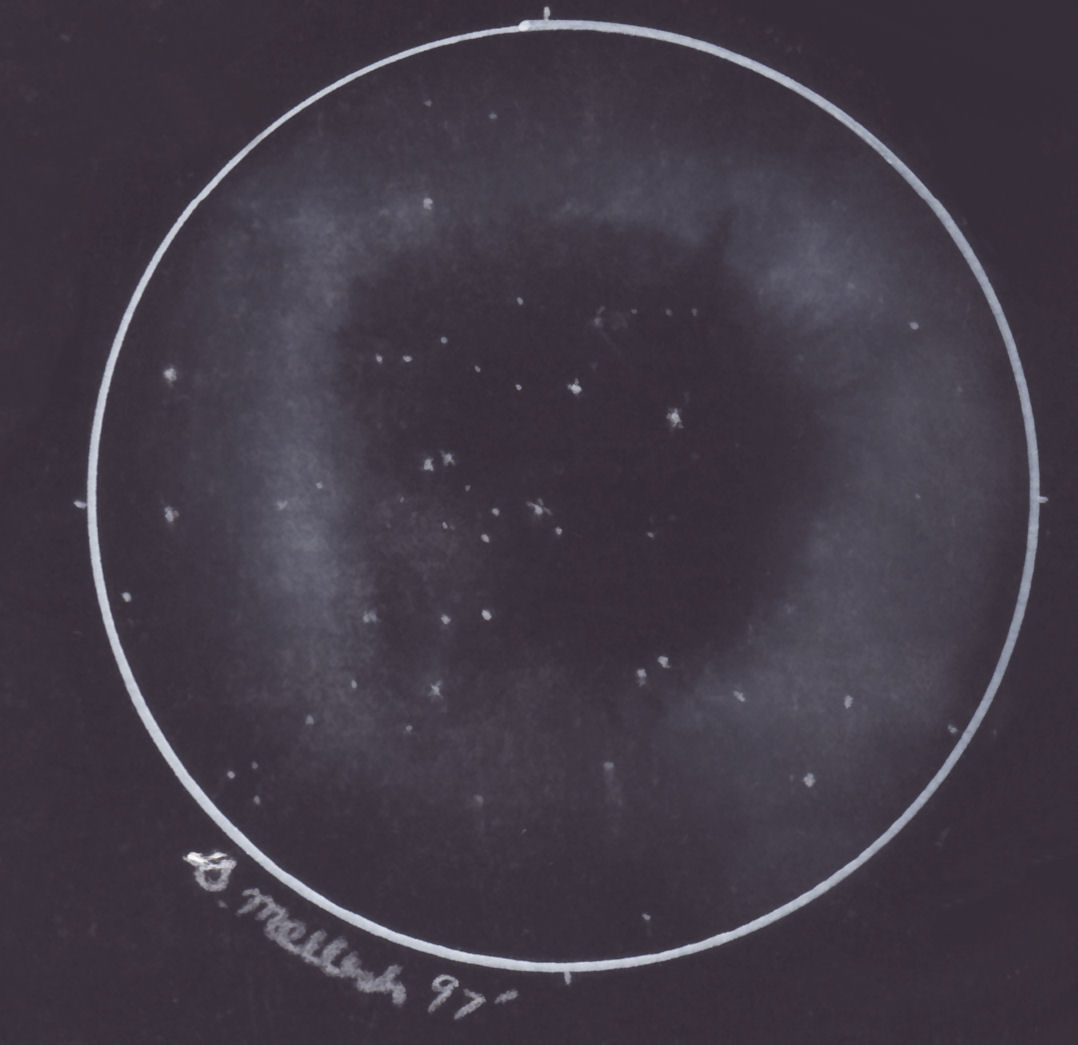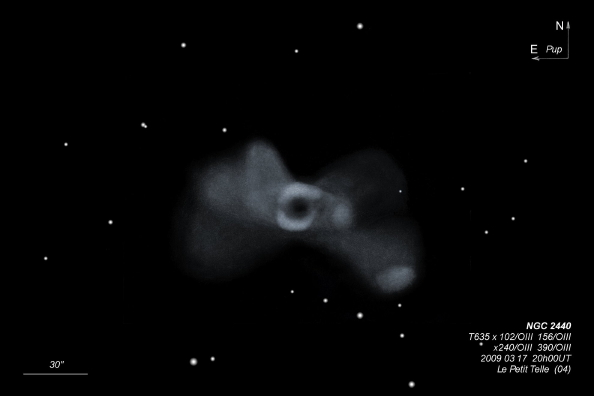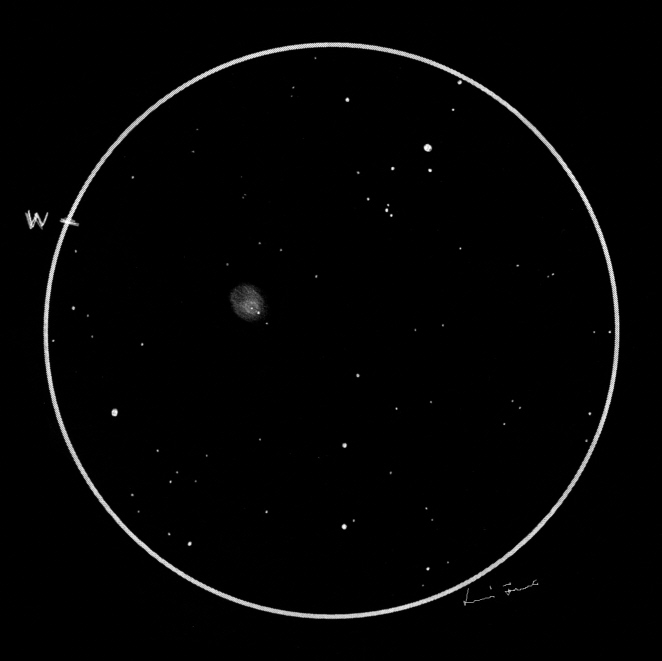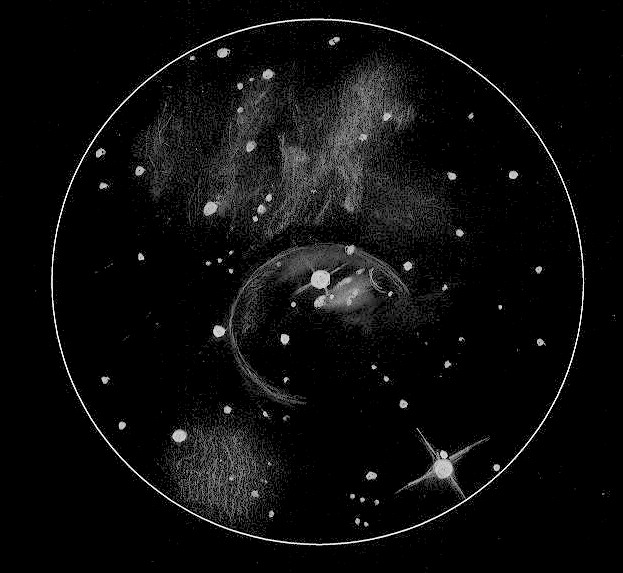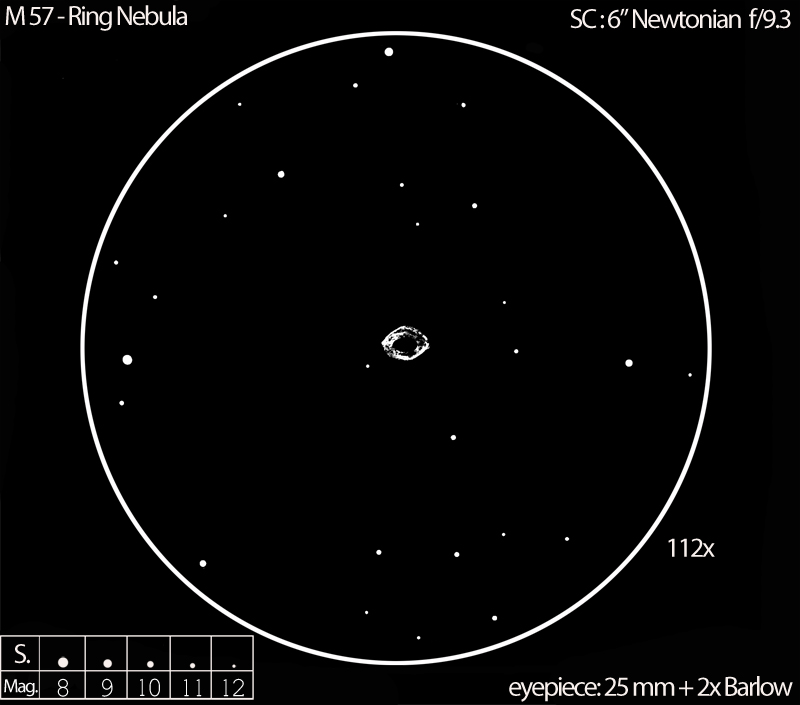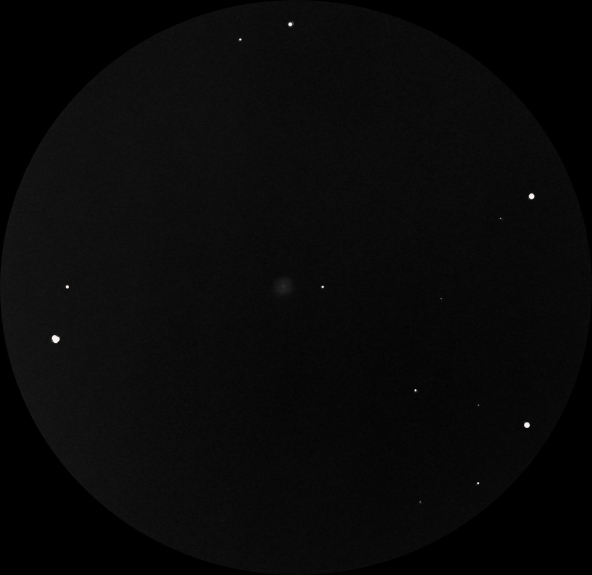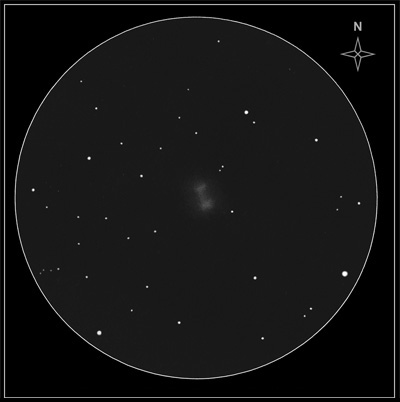
M76, The Little Dumbell in Perseus
Sketch and Details by Michael Vlasov
M-76 (The Little Dumbbell) planetary nebula in Perseus.
At over 10th magnitude – it is one of the least prominent Messier objects. M-76 has two NGC designations: 650 and 651. The nubula resembles “Dumbbell Nebula” (M27), but much dimmer and more elongated. It’s southern half is slightly brighter. M76’s central star has a magnitude of over 17, and can not be observed visually. Use of UHC filter didn’t reveal any spectacular features on the nebula.
Observation and sketch details: Negev desert (Israel). Transparency was mediocre, compared to typical conditions (around 6.1m). The sketch was made using 8″ Orion equatorial Newtonian, at 125x power, graphite pencil and a red light.
Object Name: M-76 , The Little Dumbbell
Object Type planetary nebula
Location Negev Desert, Israel
Date 17/10/2009


